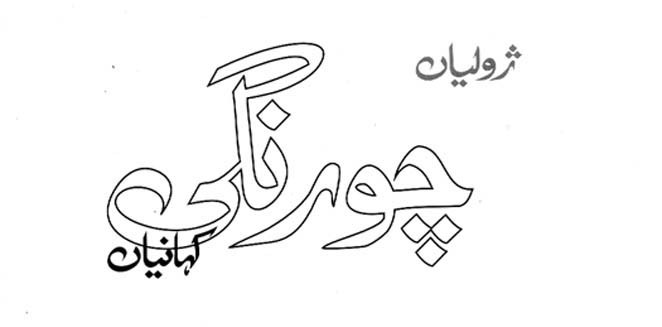
In his latest book, Chaurangi, Julien brings insight, texture, detachment and sizzling register

Julien Columeau’s latest book in Urdu, Chaurangi, contains a novella, ‘Zain Mussawar’, and three short stories: ‘Urdu ka Akhri Likhari’, ‘Kamran Ali Qawal’ and ‘Pyare Ustad’. In my humble opinion Julien is the best thing that could’ve happened to Urdu: an outsider adopting a foreign language and making it his own.
Every serious reader or writer knows how languages such as English and French have benefited from writers for whom French or English wasn’t their primary language. It has happened to Urdu as well, but mostly on a regional scale, for instance, writers of Punjabi origin opting to express themselves in Urdu at the cost of their mother tongue. However, the insight, texture, detachment and sizzling register that Julien brings to Urdu -- which I had pointed out when I wrote about his story ‘Zalzala’ -- is unprecedented in Urdu. In a few places his diction is mesmerising:
The novella ‘Zain Mussawar’ is conveyed to the reader from three reference points -- Zain, his painter friend Faqir, and the narrator. It alludes to Balzac’s The Unknown Masterpiece, which was made into a film by Jacques Rivette under the title of La Belle Noiseuse; medieval miniature painters who brighten up Orhan Pamuk’s My Name is Red; and Waris Shah’s Ranjha of Takht Hazarah to name a few.
In the novella, the narrator has been tasked to write an article on the first anniversary of Zain the famous painter who was burnt to death when his expensive house caught fire. The real story begins as the narrator tracks down and interviews Faqir, who is the only person alive to give a detailed account of the deceased painter’s life.
Read also: Julien’s fictional world
In setting up this strategy, Julien does two remarkable things, which I believe have never been done before in Urdu -- first, he examines the cultural history of Pakistan while examining the evolution of a modern Pakistani painter. And second, he looks at the contemporary urban Pakistani landscape through the struggles and tensions an artist has negotiated, juggling colonialism, questions of heritage, the influence of foreign ideas, and clash of modernity and post-modernity and so on.
His writing gathers and employs the influences of Picasso as well as the emotional pull of sculptures from Mohenjo-daro era.
Julien’s other remarkable feat lies in his ability to be simultaneously irreverent and respectful to both the language and his characters. This could be because he is carrying the legacy of modern French literature in his head. And also because, as a non-native speaker of Urdu, he is not shackled by the constraints of puritanism that afflicts his many contemporary Urdu writers. They haven’t yet learnt the art of being vulgar and artistic at the same time, thus bridging the gap between language that real people speak and how literature reflects it. Julien, in essence, is fighting out the unfinished anti-colonial war of the pen.
People privy to Pakistan’s cultural life may feel the main characters are inspired by famous personalities. In lesser hands, that could’ve been a pitfall, but Julien takes the stories beyond the point of recognition.
In ‘Kamran Ali Qawal’, he charts the journey of the nephew of a famous qawwal, evoking the tensions that usually run in artistic families: jealousy, revenge, fame, vulgarity that fame inevitably brings, regret and all the other emotions that make us three-dimensional humans. The story starts in a comic tone as the qawwal sits in a luxurious hotel (in Mumbai?) drunk, with a harmonium, to practice when he realises the hotel has been stormed by terrorists.
As he tucks his massive weight inside a closet, he revisits his life from childhood to adulthood and that journey takes the reader to the darker depths of human behaviour; yet succeeds in evoking empathy for the pathetic qawwal.
Julien impresses the reader with his insight and nuance, but also how an insider views certain issues. For example, he inserts lines about the qawwal’s uncle reaching international fame where one of his songs is being used in a rape scene in a major Hollywood film (Dead Man Walking is alluded to here), not to mention youngsters dancing at discos to many sacred songs.
Julien reflects on the sentiments of many Pakistani when he says that white people are unfamiliar with reverence.
While all four pieces in the book are a delight to read for the stories that they tell and the canvas they paint, Julien‘s finest spell is cast when he kneads human existence with hopelessness and bleakness with a comic twist. Yet hidden behind the comic twist stands a feeling of distrust.
In all four stories, one of the main characters is betrayed by a character who had earned his trust and affection. In ‘Urdu ka Akhri Likhari’ (the title sounds like a play on Urdu ki Akhri Kitab), an aging Urdu writer who can’t write fiction anymore (no pun intended) and only churns out book reviews, is entrused into the care of a young woman of rustic background. Distrustful in the beginning, he opens up to her because of her serious desire to learn about art and literature.
This new attachment brings jealousy naturally, and when he eavesdrops on her as she speaks to her lover over the phone in Punjabi, he’s heartbroken to learn that she is waiting for the aging writer to kick the bucket. This could also be read as a Freudian slip regarding the Punjabi vs. Urdu animosity.
Julien celebrates the will (or the connivance) of the individual, the anti-hero, in a pessimistic emotional milieu. It could be that he is a natural inheritor of the French band of cynicism. Or it could be that the political turmoil in Pakistan, the tectonic cultural shift towards conservatism, has lent a sharp edge to Julien‘s humour noir.